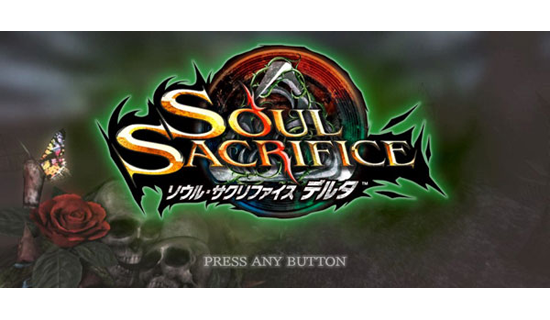It has practically become a ritual in the world of Monster Hunter clones (though please see my article on the original Soul Sacrifice to find out why calling this game one may not be fair) to release an expanded version of a game approximately one year after the original has released. Monster Hunter itself started the trend with Monster Hunter G, and has done the same thing for practically every main installment in the series since. You can usually expect one of these expansions to add a ton of new quests and weapons. If you’re lucky, you may get a few new minor features, bug fixes or optimizations. They really are for fans of the first game who just want to play some new content and are willing to pay the price of a whole new game for it. I’m very happy to say that Soul Sacrifice Delta is a huge exception to this rule. Everyone involved really went above and beyond to create what, in many ways, feels almost like a whole new game.
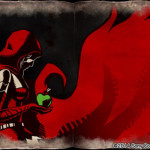 | 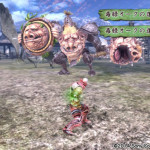 |
| Little Red Riding Hood’s character design is just awesome! | Run in fear from this rather disturbing depiction of the Three Little Pigs! |
Delta really delivers on the new content. A lot of it revolves around a very fundamental change, which is the ability to align yourself with a faction. In the original game you were able to declare your allegiance by saving or sacrificing more often, or keeping the two balanced. In Delta you have the option of joining Avalon (the power hungry wizards who believe monsters should perish, thus prefer to sacrifice), Sanctuary (the wizards who believe people should be saved when they become monsters, thus prefer to save) or Grimm (the wizards who believe all should be left up to fate, thus they can save or sacrifice). Thus you are encouraged to decide the fate of your foes based on your allegiance (in fact you are penalized if you don’t act accordingly).
 | 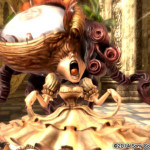 |
| Me and Little Red Riding Hood just chillin’ | Snow White’s transformation into a giant eyeball monster is pretty much as disturbing as the Three Little Pigs… |
I had previously praised the original Soul Sacrifice for its fantastic writing and voice acting that made the story such a pleasure to play through, and thankfully we get a lot more of that! The previous handful of side-stories focusing on interactions with various NPCs have been re-categorized into Sanctuary or Avalon, and many more new ones were added. A third set of stories for the Grimm faction was also created. In fact if you defeat the final boss of the original game and then complete the new Grimm stories (largely featuring characters from Grimm Fairy Tales), a new set of chapters in the main story will open up, resulting in a brand new final boss. These additions are extremely well integrated into the previous story, and are absolutely up to the same standards of quality. Previously reoccurring themes, such as your character’s longing for your very first partner from the first game (No spoilers!), are even brought to new and more amazing heights.
 | 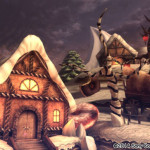 |
| Little Red Riding Hood also has a monster form! | This appears to be a Hansel and Gretel level. Delicious, but also creepy! |
Another huge new feature is the ability to visit “yorozuya no torihiki chou” (“The Merchant’s Trading Curtain”) between quests. Four different NPCs are here with whom you can have conversations, and do so many different things that it’s almost intimidating at first. You can trade your extra spells or monster souls for costumes and rumors. What are rumors? They are equip-able items that grant you various effects such as increased experienced, and increased chances at harder to get monster souls. This new system is incredibly helpful in leveling up your character quickly, and probably one of the most noticeable improvements from the original Soul Sacrifice. If you don’t want to trade your hard earned spells or monster souls for rumors, you can even buy them with real money (and the game doesn’t throw this in your face at all, don’t worry). There is even an NPC that will allow you to post a soul that you’ve gathered to twitter once per day, and spells to the PlayStation Vita application Near. This entire section is full of great features, and is overall a fantastic addition to Delta.
The last major new feature that Delta has to offer is the ability to create “blank pages”. This is basically a system to allow you to create custom quests that allow you to farm for specific spells (though they cost spells to create in the first place). I didn’t take advantage of this feature too much, but it is the key to one particular power leveling method. Of course there are many more minor additions to Delta, such as marginal graphical improvements, some new music, brand new spells and slight alterations of the effects of and methods of obtaining some of the previously existing spells.
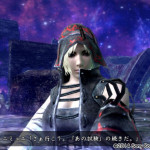 |  |
| Nimyue is back! Sort of… | Weird baby things that you fight near the end of the new content. No spoilers, but they are creepy! |
When I played through the original Soul Sacrifice, I confess that I focused mainly on getting through the extremely interesting story. I didn’t put much time at all into things like an optimal character build, or extensive upgrading of spells. As a result I struggled my way through many of the later monsters before barely managing to finish the game. This time around I did a bit of research and found a play style that I really liked, and upgraded my spells around that. The number of spell options that Soul Sacrifice offers can really be intimidating, so I can’t recommend enough taking the time to try out everything to find a build that really works for you. It makes the game so much more enjoyable to play, and considerably easier to complete.
I was extremely pleased with everything that Soul Sacrifice Delta had to offer. It’s a worthwhile upgrade for anyone who liked the first game, as its amount of new content and modifications certainly justifies any reasonable price tag. It’s also a great entry point for anyone who missed out on the first game but wants to see what Soul Sacrifice has to offer.
